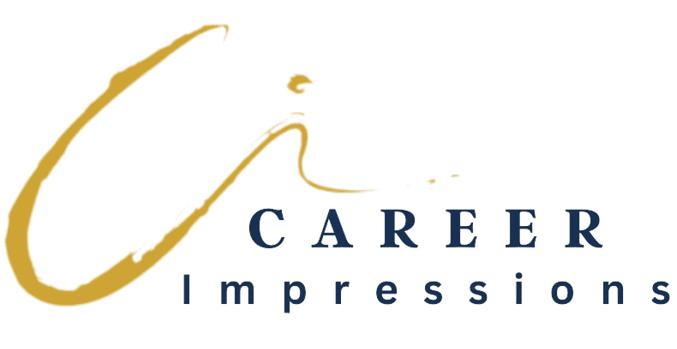
The All-In Job Search Checklist
Over the past 15+ years, I’ve had the pleasure of partnering with an incredible range of senior executives and savvy professionals as an executive resume writer and job search strategist. Whether eager, anxious, or somewhere in between, they all come to me with a similar mission: to land a new job.
Most assume they’re just missing one thing—a great resume.
But here’s the truth: job searching isn’t a one-step process. It’s a multi-faceted journey. And just like baking a cake without baking soda, skipping the key ingredients in your search will leave you with a flat outcome. Below are some common job search mistakes to avoid and a comprehensive job search checklist to help you get better focused and moving forward!
The Resume Trap: A Common Misstep
Take a well-known project management professional I worked with. She believed her resume just needed a little polish. While she had the basics covered, it hadn’t been updated in years. It didn’t reflect her strengths, modern branding, or current resume trends.
Once we discussed what makes a modern resume stand out, she agreed to a complete rewrite, but declined updates to her social media or other materials. Despite recognizing she was behind the times, she still believed the resume alone would be the magic key.
Another client, a long-standing sales executive, had a similar approach: build a resume and cover letter, then head straight to online job boards. Networking? It hadn’t even crossed his mind.
And then there was the VP of operations—sharp, articulate, and confident. He was sure he’d nail the interview once his resume got him in the door. However, during our strategy session, he struggled to express his value and answer basic questions. I suggested interview coaching. He declined. After all, he was “already a great communicator.”
Despite different backgrounds, these clients shared the same blind spot: putting all their job search eggs in one basket.
The Real Job Search: A Multi-Pronged Strategy
Yes, a compelling resume is essential. But today, it’s only one piece of the job search puzzle.
Employers and recruiters aren’t just reading your resume—they’re Googling and researching you online. If your LinkedIn profile is outdated, off-brand, or disconnected from your resume, that disconnect can raise red flags.
And if you haven’t interviewed in a while? You may be rusty. Confidence doesn’t always equal clarity under pressure.
And don’t get me started on relying solely on job boards, which are one of the lowest-return strategies in a modern job search. Yes, you can still apply for jobs online, but you must also consider other search tactics to help you get seen in a sea of competitors.
Here’s the bottom line: a successful job search requires a well-rounded strategy, consistent effort, and attention to detail across multiple areas.
The All-In Checklist for a Job Search That Works
To avoid spinning your wheels, here’s a checklist to guide your journey. Don’t skip steps. Don’t cut corners. And don’t rely on just one tactic.
✅ Pick a Target Before You Launch
“A shot in the dark rarely hits the mark.”
Before firing off resumes, get crystal clear on your job target.
-
Define your ideal title(s), industry, level, and geographic preference.
-
Know what size/type of company excites you—startup, Fortune 500, nonprofit?
-
Be specific. Instead of “something in marketing,” say “a senior digital marketing role in the tech sector with a focus on B2B demand generation.”
Pro Tip: Create a 1-page “target company list” with your top 25 companies of interest to guide your research and networking. Yes, you need a target list. It’s important to understand what organizations are tied to your offerings and who is hiring people like you.
✅ Know Your Value Proposition
“You can’t sell what you don’t understand.”
Take stock of your professional value and understand what makes you stand out:
-
What business problems have you solved?
-
What metrics or results can you point to? (e.g., “Increased client retention by 32% in one year.”)
-
What strengths do others consistently praise you for?
Example: “I help mid-sized SaaS companies scale from $10M to $50M by leading product-led GTM strategies and building high-performing teams.”
Package these into short value statements for your resume or to use in interviews, LinkedIn headlines, and networking intros.
✅ Understand the Market
“Study the job before applying for it.”
Research job postings, industry trends, and employer needs in your target field to gather insights that can help you tailor your messaging:
-
What keywords show up again and again? Use those.
-
What tools or certifications are frequently requested?
-
Which problems do employers in your field seem desperate to solve?
Example: If you’re in finance and every VP-level posting mentions “ERP implementation experience,” make sure that’s visible in your resume and LinkedIn.
✅ Polish All Career Documents
“Every touchpoint tells your story.”
Resumes matter—but so do the other career materials:
-
Resume: Modern formatting, keyword optimization, and metrics-driven content.
-
Cover Letter: Tailored to the job, showing an understanding of the company’s needs.
-
LinkedIn Profile: On-brand, achievement-focused, with an engaging headline and About section.
-
Executive Bio: Short narrative-style document (1 page) highlighting career highlights.
-
References Sheet: Include names, titles, contact info, and context for how they know you.
-
Thank You Letters: Thoughtful follow-ups that reiterate fit and enthusiasm.
Pro Tip: Save all these in a Google Drive folder so you can easily tailor them for each application. And yes, you must customize your resume for every application. Must!
✅ Strengthen Your Online Presence
“Google is the new resume.”
If a hiring manager Googles your name, what will they find? Hopefully, a fully complete and optimized LinkedIn profile and no highly contentious social media posts.
Make sure your online presence is:
-
Professional (remember, the content you post online can live on there forever)
-
Aligned with your resume (no conflicting info)
-
Actively maintained (not outdated)
LinkedIn Tips:
-
Use a high-quality headshot and branded banner image
-
Feature accomplishments in your headline (e.g., “CFO | Scaled global finance ops for $200M PE-backed SaaS company”)
-
Regularly post and engage with content to stay visible
Bonus: Consider a personal website or portfolio if you’re in creative or technical fields.
✅ Address Gaps and Barriers
“Own your story.”
Hiring managers will spot career gaps, role changes, or skill gaps—so address them proactively. Prepare your explanation and, if needed, pursue learning opportunities or certifications to close the gap.
Examples:
-
Career Gap: “Took a career break to care for family, now refreshed and actively seeking leadership opportunities.”
-
Skill Gap: Enroll in relevant courses (e.g., Coursera, LinkedIn Learning) and showcase that learning on your resume or LinkedIn profile.
-
Unusual Path: Reframe it as a unique value (e.g., “After 10 years in journalism, I now bring deep storytelling skills to corporate communications.”)
✅ Practice for Interviews
“Confidence comes from preparation.”
Even great communicators stumble when put on the spot.
-
Practice aloud. Don’t just think about your answers—say them.
-
Use the STAR method (Situation, Task, Action, Result) for behavioral questions to build more comprehensive stories.
-
Prepare strong opening statements, transitions, and closers.
Example Questions to Prepare:
-
“Walk me through your resume.”
-
“Tell me about a time you led through change.”
-
“Why are you leaving your current role?”
Pro Tip: Record yourself on video to review your delivery and body language.
✅ Network with Purpose
“People hire people they know, like, or trust—or people who come recommended.”
The hidden job market is real. Many jobs are never posted, and referrals can dramatically increase your search chances.
How to start networking:
-
Reconnect with past colleagues, mentors, or classmates
-
Attend industry events, webinars, or alumni meetups
-
Engage with key players on LinkedIn. Comment thoughtfully, DM if appropriate
-
Ask for information or introductions, not just job leads
- Tell everyone you come into contact with what you are good at and what you are looking for
Remember, networking isn’t just about asking for a job – it is about visibility and relationships. Foster connections with care.
Example LinkedIn outreach:
“I’m [Your Name], a [Job Title or Area of Expertise] with a background in [brief value prop – e.g., “scaling B2B sales teams” or “leading digital product launches”]. I’m exploring new opportunities in [industry or role type], ideally with companies focused on [specific goal, product, or market]. I came across your profile and wanted to reach out and connect, as your work at [Company] stood out to me, and your daily posts about [topic] are very interesting. Looking forward to connecting and learning more from you.”
✅ Stay Organized and Consistent
“Job searching is a job.”
Build routines. Track your applications, follow-ups, and responses with a simple spreadsheet or a tool like Teal or Huntr. Set daily or weekly goals. Job searching takes time, and consistency wins.
Weekly goals to keep momentum:
-
Apply to 3 to 5 well-matched roles
-
Reach out to 3 networking contacts
-
Engage on LinkedIn 3x/week
-
Practice interviews for 30 minutes
-
Research 1 to 2 target companies
✅ Get Help If You Need It
“You don’t have to job search alone.”
There’s no shame in asking for support. In fact, it’s smart.
Consider:
-
Working with a career coach or resume writer
-
Joining a job search accountability group
-
Leveraging mentorship platforms (e.g. Ten Thousand Coffees)
Think of these engagements as an investment in your next big opportunity.
Gather Your Eggs, Then Get Cracking
The job market is competitive. Showing up with only a strong resume or only relying on job boards is like bringing a butter knife to a sword fight.
A successful search requires effort on multiple fronts. It involves self-awareness, strategy, and a willingness to stretch outside your comfort zone.
And yes, it takes time. But when you treat the job search like a job — one that deserves your full attention and energy — you’ll start seeing results.
So, gather all your eggs. Nurture every part of your strategy. Then get out there and get cracking!
